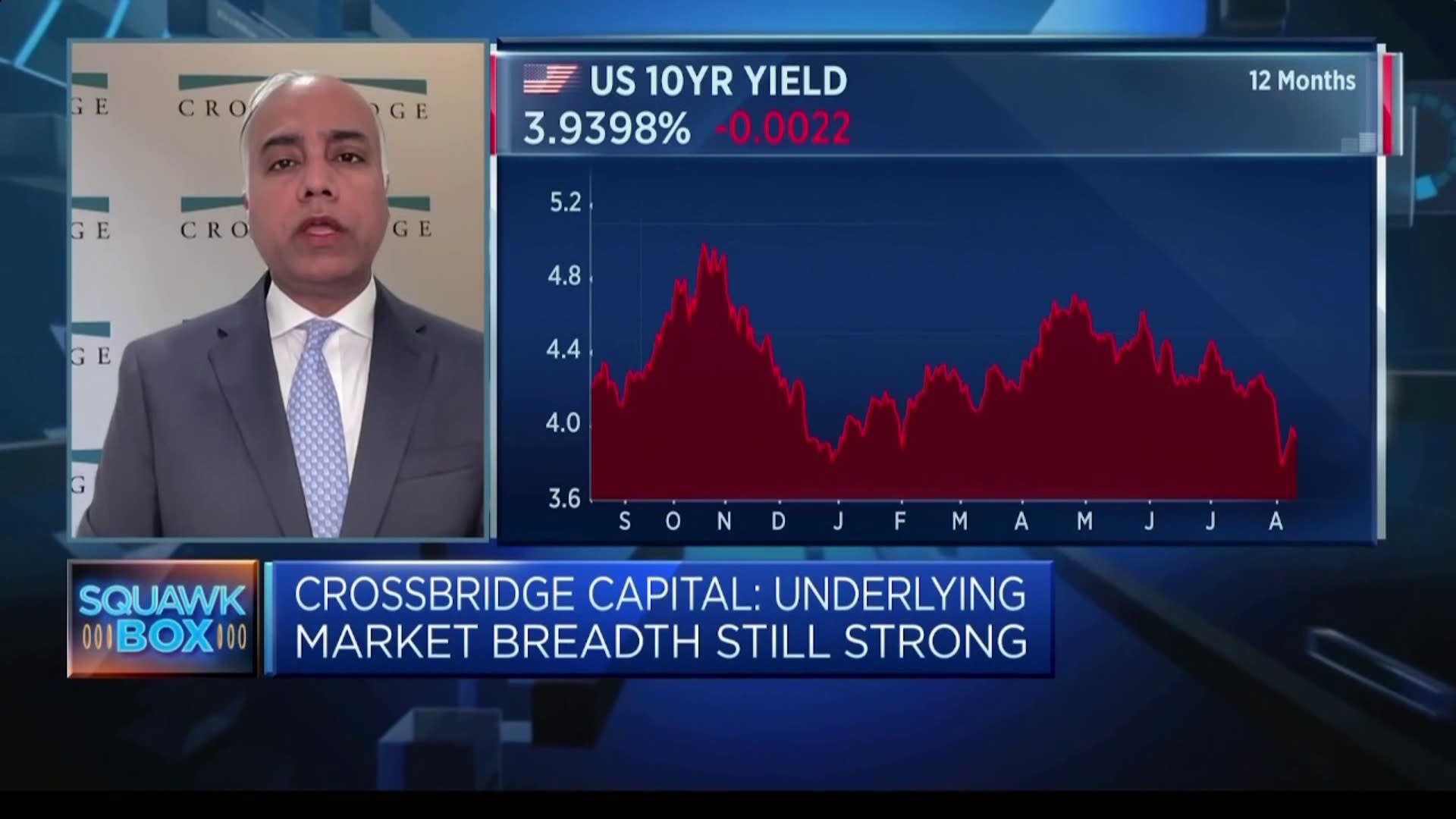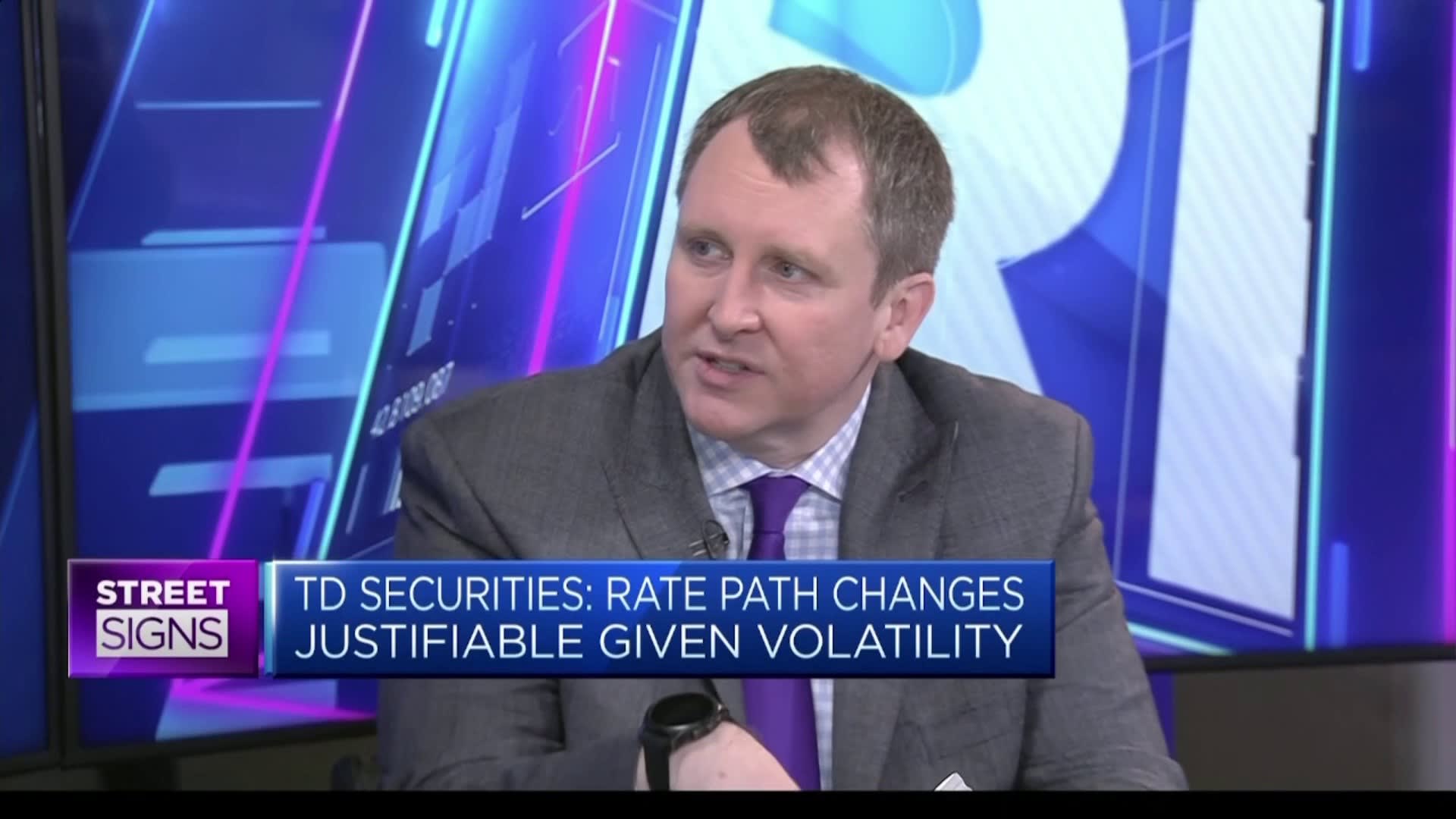
Global markets are cautiously rebounding from an early-August rout — and one asset manager says there’s no need to fear a burst tech bubble causing a persistent downturn.
Technology stocks were among the hardest-hit by the recent sell-off, as declines of 1.6% in July and more than 4% so far in August for Wall Street’s tech-dominated Nasdaq 100 index have revived a debate about whether the sector is in a bubble waiting to burst.
“I just don’t see a tech bubble. Yes, a few stocks have done well, and they have done well on earnings that they have delivered,” Manish Singh, chief investment officer at Crossbridge Capital, told CNBC’s “Squawk Box Europe” on Monday.
Pointing to the Nasdaq, Singh noted that on an equally-weighted basis — giving each stock the same weight regardless of market capitalization — the index is flat over the last three years.
“So if you have 100 stocks and seven of them are doing well because they have delivered [on] earnings, that’s fine. There are 90 other stocks which haven’t done well, so I do not see any reason to be concerned that you’re going to enter a bearish pattern where the market is overbought and therefore people are going to sell. I just don’t see that pattern,” he said.
The tech sector’s recent bull run has in part been powered by the so-called “Magnificant Seven” of Apple, Amazon, Alphabet, Meta, Microsoft, Nvidia and Tesla.

Mag 7 index.
Singh said the broader S&P 500 also did not appear overbought, having gained less than 4% per annum over the last three years due to weakness across 2022 and 2023.
On an earnings basis, Microsoft’s results drove a sharp sell-off in the stock before semiconductor firm AMD‘s results triggered a rally by reinforcing that demand was still strong, Singh continued.
“That just doesn’t tell you that there’s conviction in the market whichever way it wants to go,” he said.
Volatility to remain
Even as stocks in Europe, Asia-Pacific and the U.S. regain recent losses, market-watchers agree volatility is likely to continue.
“I do think that you will have a bit more volatility for the month of August, because that’s the seasonality pattern… we had [a] very similar thing last year, if you look at if you superimpose the graph from this year to last year, we are almost following the same pattern,” Singh said.
“This is no different than what you see in a U.S. election year, where you have a seasonality around August and September, and then post-election, the market starts rallying,” he said.
Matheus Dibo, managing director in the investment strategy group at Goldman Sachs Private Wealth Management, noted last Monday’s spike in the Vix volatility index to an intraday high that has not been seen since the 2008 Financial Crisis or the pandemic, but said there was a very different backdrop to those occasions.

Technical factors pushed the Vix higher, exacerbated by macro concerns and the unwinding of the yen carry trade which sparked the synchronized decline in equities, bond yields and commodities, he told CNBC on Monday.
“It’s difficult to know if the worst is over… volatility could remain elevated for quite a while,” he said, with the release of U.S. retail sales data, the consumer price index and the Federal Reserve’s conference at Jackson Hole all potentially moving markets this month.
“But when you look at the fundamental underpinnings of the U.S. economy, they remain quite solid in our view,” he said.

